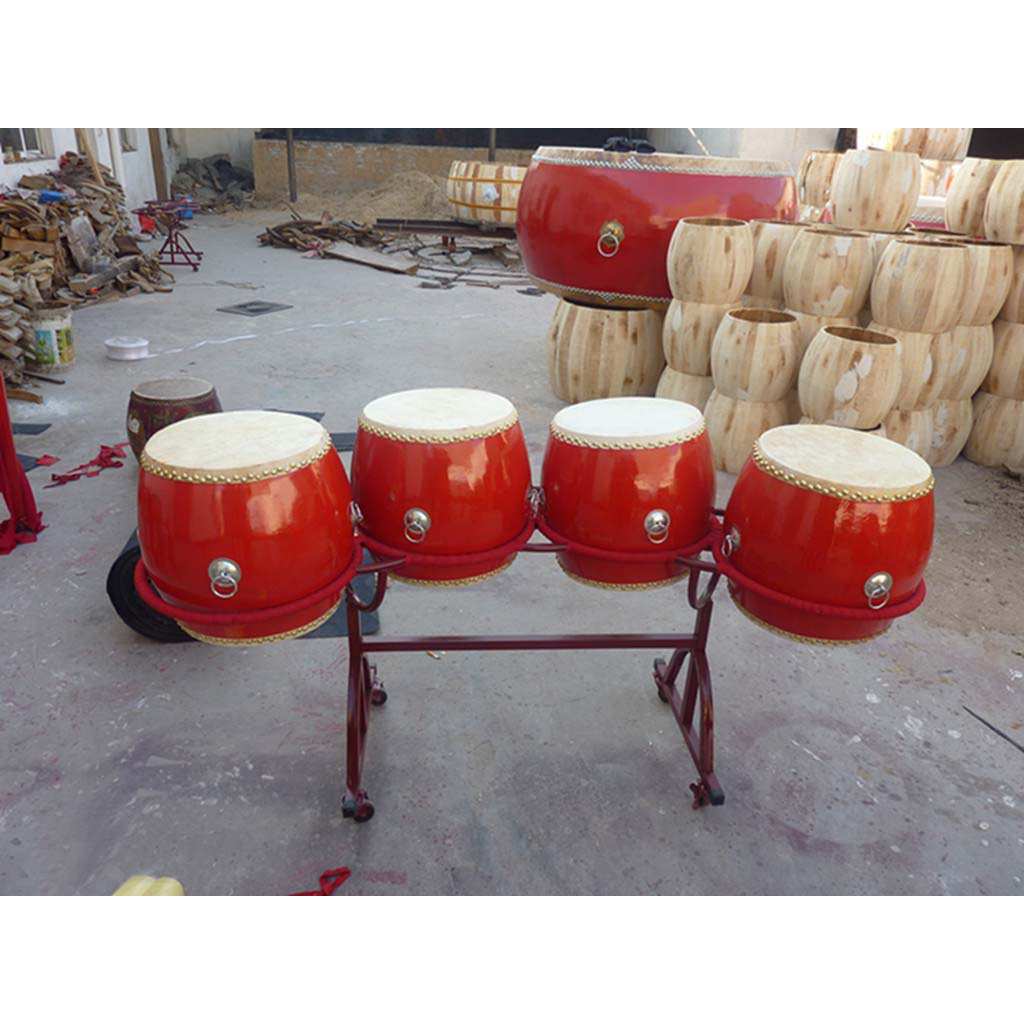paigu overview
 Paigu (Pinyin: pái gǔ) is a new variety of drum instruments. Appeared in the early 1960s, it was produced by Cai Huiquan and Yang Jingming of the China Central Broadcasting Chinese Orchestra based on the reform of the medium-sized hall drum and waist drum commonly used by the people, and has been continuously improved since then. The sound of row drums is intense and swaying, the treble is firm and powerful, and the middle and bass are generous and loud, especially good at expressing warm and jubilant emotions. In the music "Festival of Shanzhai", "Gongs and Drums on the Sea", "Dragon Boat Gongs and Drums", there are solo sections of drums.
Paigu (Pinyin: pái gǔ) is a new variety of drum instruments. Appeared in the early 1960s, it was produced by Cai Huiquan and Yang Jingming of the China Central Broadcasting Chinese Orchestra based on the reform of the medium-sized hall drum and waist drum commonly used by the people, and has been continuously improved since then. The sound of row drums is intense and swaying, the treble is firm and powerful, and the middle and bass are generous and loud, especially good at expressing warm and jubilant emotions. In the music "Festival of Shanzhai", "Gongs and Drums on the Sea", "Dragon Boat Gongs and Drums", there are solo sections of drums.The row drum consists of a set of five drums of different sizes and sounds. The drum is 29 to 33.3 centimeters tall, 16.7 to 37 centimeters in diameter on the upper mouth, and 11.7 to 37 centimeters in diameter on the lower mouth. The outer diameter of the drum frame on both sides of each drum is the same but the inner diameter is different, which can produce two tones with different pitches, so there are ten tones in five drums. Both sides of each drum are equipped with tuning equipment, and the tuning range can reach four or five degrees, which can be tuned according to actual needs. The drum body is fixed on a special drum stand that can be raised and lowered. The upper end of the drum stand is a "U"-shaped stand. The drum body can be turned over for pitch selection when placed in the stand.
Chinese percussion music adds rich colors to traditional folk opera with its diverse and changing timbres. In history, drums and gongs, two traditional Chinese musical instruments that are still widely played, have their origin and development studied by many scholars. The types and manufacturing process of these instruments are to be explored in depth. Here, we will initially discuss the common drums, gongs, sticks and racks commonly used in modern Taiwanese Chinese orchestras, as a starting point for the study of traditional Chinese percussion instruments.
The drumming essentials and actions of the row drum are the same as those of the bass drum. Both sides of the row drum can be tuned. This is because each row drum has a large drum on one side and a small drum on the other side, and its sound range is also different. The reason is that the drum head on the other side is not static and resonance occurs although only one side is struck when playing. Therefore, setting the two sides of the drum skin into a consonance interval, on the one hand, it is easy to set the tone, and on the other hand, it can make the pronunciation pure, because the percussion sound is the material of the music itself, which makes the sound pleasant to the ear and the rhythm is clear. In teaching, whether playing in rounds or rolls, or in etudes and solos, the sound quality requires special effort.
The Jilin Provincial Song and Dance Theater Yuyanhe cooperated with the Suzhou National Musical Instrument No. 3 Factory to develop a row drum composed of thirteen drums. The drum body is made of glass fiber reinforced plastic.
- Pinyin:pái gǔ
- prototype:Medium drum, waist drum
- time of appearance:early 1960s
- drum height:29—33.3cm
- Classification:ethnic percussion instrument
overview of other similar instruments
- sanyanxiao overview
- Daguangxian overview
- Leiqin overview
- hahao overview
- yandundagu overview
- Han Xiaozheng overview
- Fang Xiang overview
- guanzi overview
- zhuqin (Dao Qin) overview
- zhuiqin overview
- bangzi overview
- three-stringed piano overview
- Gehu overview
- xiao overview
- xiaokonghou overview
- Konghou overview
- Sheng overview
- suona overview
- hulusi overview
- gushao overview
 渝公网安备 50010702504639号
渝公网安备 50010702504639号